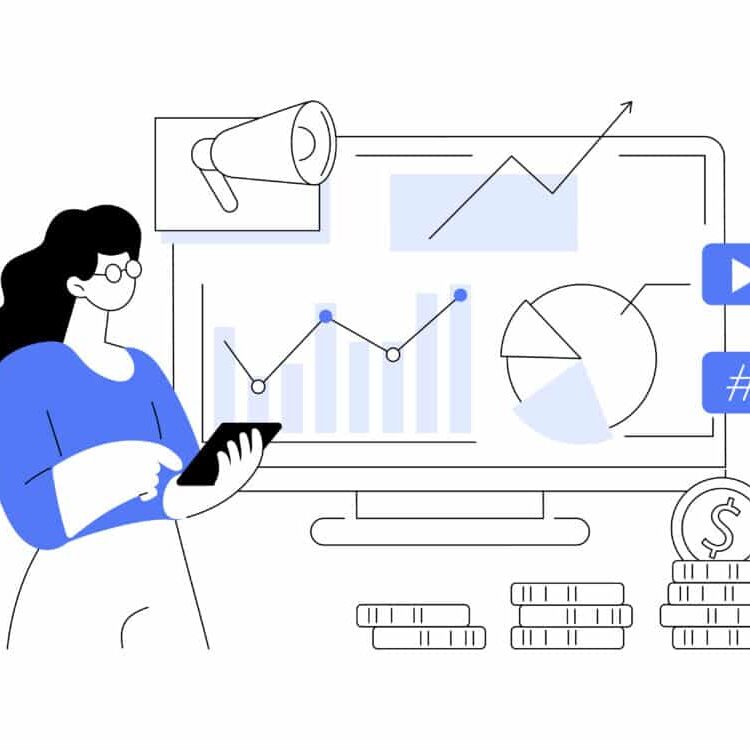As a website owner, you have probably considered which queries and keywords bring traffic to your website. But have you thought about the intent behind the searches that bring your visitors? It turns out that search intent might be more predictive of traffic quality and conversion rate than specific individual keywords. Below, we dive into the various types of search intent and how they can impact your SEO efforts.
The Significance of Keyword Intent in SEO
Understanding keyword intent is paramount in SEO because it directly influences the effectiveness of content creation and search engine rankings. By deciphering the intent behind users’ search queries—whether it’s navigational, informational, commercial, or transactional—marketers can tailor their content to precisely match what users are seeking. This alignment enhances user experience by delivering relevant and valuable content, increasing engagement and satisfaction. Moreover, search engines like Google prioritize content that meets user intent, rewarding those pages with higher rankings on search engine results pages (SERPs). Consequently, incorporating keyword intent into SEO strategies enables businesses to attract targeted traffic, improve conversion rates, and ultimately achieve their digital marketing objectives.
Overview of Keyword Intent and Its Impact on Content Creation
Keyword intent, also known as search intent, is what lies behind every search query. Some users may be seeking more information about a certain topic, getting ready to make an important purchase, or trying to orient themselves in a new landscape, whether digital or physical. Whatever intent users search with directs their path and largely determines whether they will convert. By understanding and appropriately targeting the four kinds of search intent, marketers can tailor their content and website resources to effectively meet users’ needs.
The Four Main Types of Keyword Intent
- Navigational Intent: When users are looking for a specific website, that constitutes navigational intent. Searches like “Facebook login” or “Amazon” exemplify navigational intent, where users are trying to directly access a particular site. Once you have built brand authority, navigational intent can help drive traffic to your website. Often, established websites have their own brand name as the top search query that directs users to their site.
- Informational Intent: Users who are seeking answers to their questions or educational content have informational intent. You can build brand authority and trust by providing content that helps users with informational intent. While this may not lead to a purchase in the immediate future, it can pay dividends in the long run.
- Commercial Intent: Users who want to research products or services before making a purchase decision have commercial intent. These are the types of users who will benefit from detailed product descriptions, use case information, lists of what is included with specific services, and blog posts about the benefits or details of your product or service.
- Transactional Intent: Users who intend to complete a specific conversion action, generally making a purchase, have transactional intent. They could also be called purchase-ready customers and are generally the highest-converting users, so capturing them can be extremely profitable, but also difficult if you aren’t near the top of the search results.
These search types don’t account for every type of user intent – there are others, such as comparison intent, tutorial intent, and more; however, these are the types that are most relevant to B2B and consumer brands who are trying to gain more web traffic.
Why Matching Keyword Intent Matters
Making sure your content aligns with users’ search intent isn’t just about providing relevant information – it’s a fundamental aspect of SEO. Search engines organize the content they present to users with the core goal of getting users where they want to go, and search engine ranking algorithms reward websites that are able to answer users’ questions successfully. When you incorporate keyword intent into your content creation, you can enhance user experience, drive targeted traffic, and reach your digital marketing goals.
Understanding Search Intent Trends
As user needs change, search intent does, too. It’s important to keep an eye on how your website traffic and leading search queries are changing over time. The overall behavior of the market is far from stable. According to the 2023 State of Search report from SEMrush, commercial intent and transactional intent are on the rise, while informational and navigational intent have seen a decline. This is good news for businesses that sell products and services, since more searchers are interested in initiating the purchase process!
Utilizing Keyword Mapping Tools to Identify Content Gaps
Several keyword mapping tools are available to help marketers and content creators identify and repair gaps in their strategy. Google Keyword Planner, SEMrush, Ahrefs, and more tools you may already have can help you identify search intent, track your keywords over time, and compare your performance with your competitors. If you need assistance setting up keyword tracking tools, we are happy to perform setup with customizations tailored to your business and customers! Click here to get started.
Strategies for Aligning Content with User Search Intent
Key strategies to consider when aligning your content production with user search intent include the following:
- Conduct thorough keyword research, finding out not only what keywords your users are searching for, but the intent behind their searches. You can then tailor your content accordingly.
- Create high-quality, relevant content that answers users’ questions efficiently. Ensure that your content provides value to your highest quality traffic (those with most engagement and pages per session) and to your highest value traffic (those with the highest conversion rates) to show search engines that your site deserves to appear at the top of search results.
- Monitor and analyze user behavior using tracking tools such as Google Analytics to gauge the effectiveness of your content in addressing and fulfilling user search intent. If engagement rate and session duration are low, this could be a symptom of content that is not addressing users’ needs.
Mastering the art of aligning content with user search intent is key when it comes to achieving success in today’s competitive digital landscape. By understanding the nuances of navigational, informational, commercial, and transactional intent, businesses can develop targeted SEO strategies that effectively meet the needs and preferences of their target audience. Through comprehensive keyword research, high-quality content creation, on-page optimization, structured data markup, and continuous analysis of user behavior, you can ensure that your content resonates with users and ranks prominently on search engine results pages (SERPs). As search intent trends evolve and user expectations continue to shape search algorithms, the ability to align content with user search intent will remain a cornerstone of successful SEO strategies, driving organic traffic, engagement, and conversions for businesses of all sizes. If you need help aligning your keywords and content to users’ search intent, contact us for a consultation today!





